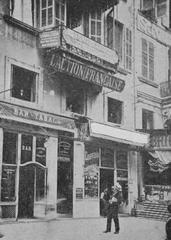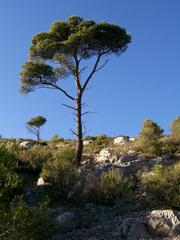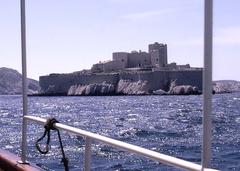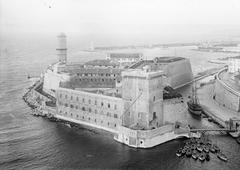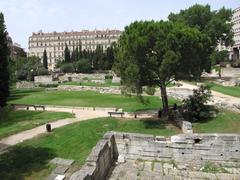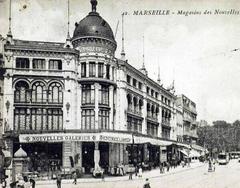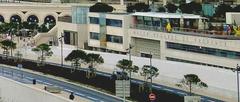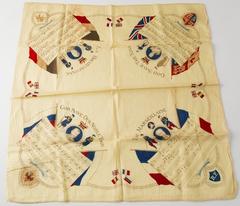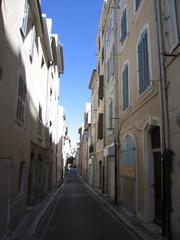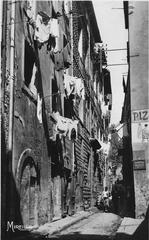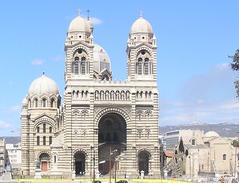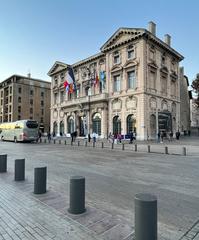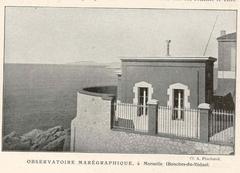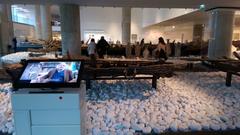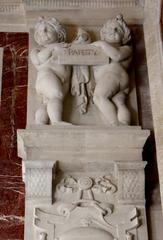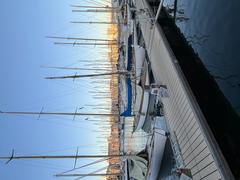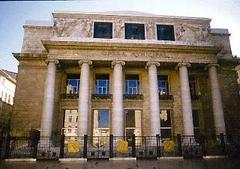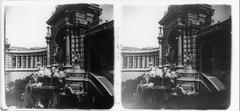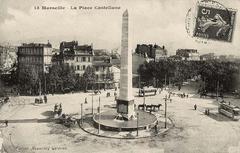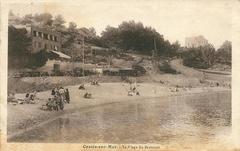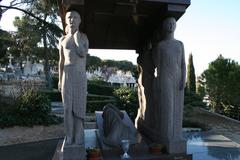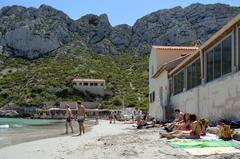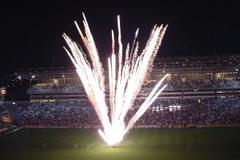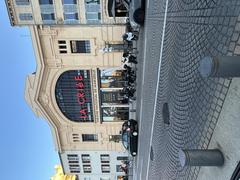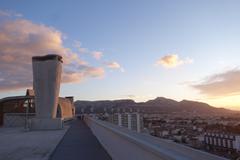Bompard Marseille Visiting Guide: Tickets, Hours, and Expert Tips
Date: 04/07/2025
Introduction
Set in Marseille’s scenic 7th arrondissement, Bompard is a district where Mediterranean vistas, historical character, and a thriving local culture converge. Unlike a single landmark or monument, Bompard is a vibrant neighborhood perched on limestone hills, offering panoramic sea views, 19th-century villas, and access to both urban and natural attractions. Its fishing heritage, architectural gems, and relaxed village ambiance make it a unique destination for travelers looking to experience Marseille beyond the tourist hotspots. This guide delivers detailed insights into Bompard’s history, main attractions, visiting tips, accessibility, and local events, ensuring you have all the information you need for a memorable visit. For the latest updates, refer to Marseille’s official tourism resources (marseille-tourisme.com) and specialized travel guides (Adventure Backpack, Travel4Real).
Table of Contents
- Introduction
- Historical Overview
- Architectural and Cultural Heritage
- Key Attractions and Visitor Information
- Outdoor Activities and Natural Attractions
- Getting There & Around
- Accommodation and Dining
- Practical Tips
- Frequently Asked Questions (FAQ)
- Visuals and Maps
- Conclusion
- References
Historical Overview
From Fishing Village to Elegant Enclave
Bompard’s origins are intertwined with Marseille’s expansion during the 19th and early 20th centuries. Initially a fishing village, Bompard developed as Marseille’s port grew, attracting the city’s bourgeoisie who built elegant Italianate villas along the hillsides (marseille-tourisme.com). The area’s proximity to the sea and its location atop the Massif de la Garde influenced both its architecture and community spirit. While Notre-Dame de la Garde basilica sits just beyond Bompard’s borders, its presence dominates the landscape (wikipedia.org).
Bompard’s history is shaped not just by affluence but by resilience. The community has maintained its character, resisting overdevelopment and preserving its distinctive Mediterranean ambiance (veronikasadventure.com).
Architectural and Cultural Heritage
19th-Century Villas and Streetscapes
Bompard boasts a wealth of 19th-century villas, characterized by pastel facades, ornate ironwork, and lush gardens. These homes, built by Marseille’s merchant class, reflect a blend of Italianate and Provençal influences (My Guide Marseille). Most villas are private, but their exteriors are visible from the charming, narrow streets.
Artistic Life and Community
The district’s artistic character is evident in its open-air Théâtre Silvain, inaugurated in 1923 and still hosting concerts and performances during the warmer months (touristsecrets.com). Cafés, bistros, and artisan shops contribute to a lively local scene, while community initiatives and resistance to overdevelopment foster a strong neighborhood identity (departement13.fr).
Key Attractions and Visitor Information
Corniche John Fitzgerald Kennedy
Running along Marseille’s coastline, the Corniche offers panoramic views of the Mediterranean and the Frioul Islands. It’s popular for walking, cycling, and sunset photography. The promenade is open year-round with free access, and has accessible pathways for strollers and wheelchairs (marseille-tourisme.com).
Théâtre Silvain
This open-air theatre is set in a natural amphitheater and hosts performances from May through September. Tickets are available online or at the venue; check official listings for current events and hours (touristsecrets.com).
Le Prophète Beach & Fishing Port
A favorite city beach, Le Prophète is ideal for swimming, sunbathing, and picnicking. The adjacent fishing port reflects Bompard’s maritime heritage and is open year-round, with seafood restaurants serving daily catches (francetravelblog.com).
Vallon des Auffes
Just below Bompard, this picturesque fishing port is known for its colorful boats and traditional seafood eateries—a must for authentic local experiences (voyagetips.com).
Guided Tours and Special Events
Guided walks reveal Bompard’s history and hidden gems, including secret gardens and panoramic viewpoints. Seasonal events, such as open-air concerts and local festivals, highlight the district’s cultural vibrancy (veronikasadventure.com).
Outdoor Activities and Natural Attractions
Access to Calanques National Park
Bompard is an excellent base for exploring the Calanques National Park, known for dramatic limestone cliffs, turquoise coves, and hiking trails of varying difficulty (Marseille Tourist Office). Trailheads like Sormiou and Morgiou are easily reached from Bompard, with some routes offering panoramic views over Marseille and the Mediterranean (Wikiloc).
Beaches and Swimming
Urban beaches such as Plage du Prophète and Plage des Catalans are within walking distance. For a quieter experience, swim among the rocks at Vallon des Auffes (New Hotel Bompard).
Cycling and Urban Exploration
Since 2019, the Corniche features a dedicated cycle path, making Bompard accessible by bike and offering beautiful sea views (marseille-tourisme.fr). Marseille’s Le Vélo bike-sharing stations are available throughout the district.
Parks, Gardens, and Viewpoints
Bompard’s gardens, both public and private, provide tranquil retreats. Notable viewpoints include terraces near Notre-Dame de la Garde and along the Corniche, ideal for photography.
Water Activities and Island Excursions
Kayaking, paddleboarding, and boat tours to the Frioul Islands and Château d’If depart from the Old Port. Bompard’s hills offer views of these islands, which are perfect for hiking and swimming (Marseille Tourist Office).
Getting There & Around
- Bus: Lines 61 and 80 connect Bompard with Marseille’s center and the Old Port. Bus 83 runs along the Corniche, stopping near key attractions (marseille-tourisme.fr).
- Metro: The nearest metro is Vieux-Port (Line 1), with transfers to buses or a scenic walk uphill.
- Cycling: Dedicated paths along the Corniche Kennedy; Le Vélo bike-sharing available.
- Parking: Limited street parking; paid lots near the Corniche and Old Port.
- Walking: The best way to experience Bompard’s ambiance is on foot, especially for its narrow, winding streets (provence7.com).
Accommodation and Dining
- Boutique Guesthouses: Many historic villas have been transformed into charming guesthouses (marseille-tourisme.fr).
- Hotels: Sea-view hotels and more options are available in Endoume and along the Corniche.
- Dining: Bompard’s restaurants serve Mediterranean and Provençal cuisine, with seafood (notably bouillabaisse) as a specialty. Cafés and terraces along the Corniche offer memorable sunset dining (voyagetips.com).
Practical Tips
- Best Times to Visit: Spring (April–June) and early autumn (September–October) offer mild weather and fewer crowds. Summer is lively but busier (hostelgeeks.com).
- Accessibility: The hilly terrain and narrow streets may challenge those with mobility issues. Main roads and the Corniche are more accessible.
- Safety: Bompard is considered safe; use standard urban precautions.
- Local Etiquette: Greet shopkeepers and restaurant staff with “Bonjour.”
- Language: Basic French phrases are helpful (touristsecrets.com).
- Connectivity: Free Wi-Fi in most cafés; public hotspots listed by the Marseille Tourist Office (marseille-tourisme.fr).
- Budget: Prices are higher than central Marseille; Marseille City Pass offers discounts (voyagetips.com).
Frequently Asked Questions (FAQ)
Q: Does Bompard have official visiting hours or require tickets?
A: No, Bompard is an open neighborhood without entry fees or fixed hours.
Q: How can I get to Bompard?
A: Use bus lines 61, 80, or 83, or cycle along the Corniche. The nearest metro is Vieux-Port.
Q: Are guided tours available?
A: Yes, several operators offer walking tours focusing on Bompard’s history, architecture, and gastronomy (veronikasadventure.com).
Q: Is Bompard suitable for families?
A: Yes, with accessible beaches and moderate walking trails. Some steep paths may be challenging for young children.
Q: What are the highlights for photographers?
A: Sunset views from the Corniche, pastel-colored villas, Vallon des Auffes, and panoramic cityscapes.
Visuals and Maps
- Photos: 19th-century villas, Corniche Kennedy at sunset, Vallon des Auffes, local beaches (alt text: “Bompard Marseille attractions” and “things to do in Bompard Marseille”).
- Maps: Interactive maps and suggested walking routes available on official tourism sites.
- Virtual Tours: Explore Marseille’s 7th arrondissement via online platforms.
Conclusion
Bompard stands out as an authentic Marseille neighborhood where rich maritime history, architectural splendor, and natural beauty combine. Whether you seek panoramic walks, fresh seafood by the sea, or tranquil gardens tucked into the hills, Bompard promises a memorable experience. Plan your visit with the latest event schedules and travel tips, and unlock more of Marseille’s hidden treasures by downloading the Audiala app.
For further details, visit the official Marseille tourism portal and related travel resources.
